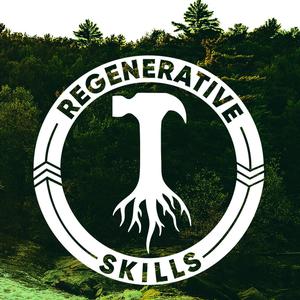
Regenerative Skills
Oliver Goshey
Helping you learn the skills and solutions to create an abundant and connected future
- 58 minutes 37 secondsExciting things to come in 2025: The New Years Special
- Hello and welcome back to a special New Year episode. Unlike the normal interview format today I want to take some time to reflect on the past year, answer some very tough and thought provoking questions from the Discord community, and explain my vision and planned projects for the year to come, or at least the ones I can foresee from this early vantage point.
- It’s always surprising to me how this little passion side project of a podcast has stayed relevant in my life and grown to reach so many people around the world. It started in February of 2017 while I was an apprentice to my friend and mentor Charlie Rendal the remarkable bamboo and natural material builder in San Marcos La Laguna in Lake Atitlan Guatemala, and since then has both followed and propelled my learning journey and career going on 9 years now. I’m so grateful to all of you, both contributors and listeners, who have supported and participated in this project for all of these years. Because of your encouragement and efforts I’ve achieved so many ambitions and dreams that could never have come true on my own. I genuinely hope that wherever you are and whatever holidays you celebrate, that you’ve had a relaxing and enriching last couple weeks with the people you love. With that said, let’s get into the topics to kick off the year of 2025.
2 January 2025, 11:01 am - 56 minutes 53 secondsThe challenges and opportunities of diverse farm enterprises with Ariane Lotti, Maria Giménez, and Francisco Alves
I’m excited to announce that we've restarted the panel format. Many of you will remember that I used to put together monthly panels with experts on popular topics. The truth is that they can be tough to coordinate and take a lot more planning than regular interview episodes so I let them go while I focused on other projects, but thanks to help from some digital tools and popular requests from listeners, we’re working to bring these episodes back on a monthly basis.
So if you haven’t heard previous panel episodes, I’ll give you a quick recap. As part of my role building the Regen ag community in Europe with Climate Farmers, I’m always trying to facilitate access to good information from experienced practitioners in regenerative agriculture. Oftentimes I look to organize these panels around the common questions that come up in our community chats. In other cases I see a lack of clear and concise information around a topic of interest. Other times I hear people referencing the work of other practitioners around the world for opportunities and inspiration and I try to connect them with each other in the Q&A sessions.
Another motivation for organizing these is to increase awareness of the practicalities that are behind the aspiration to great achievements in land management. I hope that all of you out there listening to these episodes leave after having heard these episodes feeling that the incredible accomplishments and projects of the people we highlight are achievable and replicable and that you can do things like this too. You may not personally identify with their particular contexts or want to mimic them or their work exactly, but I hope you might find a point of connection in their stories and their journeys. Every project starts as an idea or a dream or a feeling that is nurtured into its potential by the people and communities that have skin in the game and dedicate their time and efforts to co-create that potential.
With that said I want to introduce the panel and our speakers for this episode. So today we’ll be exploring the challenges and opportunities in mixed enterprise farming. By that I mean farms that sell and range of products, especially of different food categories such as cereals and cattle, or market garden and laying hens and agrotourism and farm tours.
I was really lucky to get three farmers together from very different regions who are pioneering diverse enterprise farming on their land. Now it’s not usually the case that the farmers I get to speak with are people I’ve met in person or farms that I’ve physically visited, but in this case I’ve been to and even ran some events and projects with each of the farmers who I’m speaking with.
Maria Gimenez comes to us from Wilmers Gaerten just south of Berlin Germany. Francisco Alves comes from Herdade de Sao Luis, Porcus Natura in Alentejo Portugal, and Ariane Lotti joins us from Tenuta San Carlo near the Tuscan coast in Italy. They each give much better intros of themselves and their farms than I can so I’ll let them do that, but before we jump into the panel, you should know that there’s a video version of this panel that includes the Q&A session in this last half hour which I am clipping off here for the podcast version. You can find that on the Climate Farmers YT chanel and if you happen to be an active farmer anywhere in Europe, you can also join the Climate Farmers community for free and participate in the farmer to farmers learning platform that we’ve built by going to Climate Farmers.org The community is part of a non-profit dedicated to assisting farmers at all levels of their transition to regenerative management.20 December 2024, 10:58 am - 1 hour 18 minutesRe-becoming keystone species, and practical steps for restoring your environment, with Tanja Dekker
Long time listeners to this show will know that soil health and deep soil science are not my specialty. I’ve done quite a few interviews on soil over the years, but I’ve usually looked for broader patterns and simple concepts around health soil function, and left the lab work and understanding all the microbes and fungi to others.
A few weeks ago however I was invited by my friend Isa to a soil food web alumni gathering. There I met so many fascinating people who spoke about their projects and initiatives with farmers and other organizations which ranged from production and crop health goals, to AI learning and even national security collaborations.
One of the many wonderful people I met was Tanja Dekker who is a soil life consultant and educator specializing in adaptive land management, with extensive expertise in regenerative agriculture, sustainable food forest design, and eco-conscious entrepreneurship. She leads her organization, Festina Lente, inspired by the alchemical concept meaning “make haste slowly.” Tanja is passionate about implementing regenerative practices that prioritize environmental health and community resilience.
In this episode we cover a wide range of topics from the family tragedy that led her to shift careers and work to restore soil, through her unified theory of the trajectory of the natural world and our role in it, to realizing our potential as a keystone species and the practical steps involved with analyzing your soil and broader ecosystem in order to take actions that enhance its health and vital processes.
This episode winds through curvy roads of philosophical concepts and down-to-earth steps for taking action in your own context.13 December 2024, 6:00 am - 1 hour 5 minutesLessons from regenerating a 1100 hectare farm in semi-arid Spain, with Silvia Quarta
This last week has been incredible for me. After almost 5 years of being connected to different aspects of the work at the farm in La Junquera, first through my connection with Silvia Quarta the leader of Camp Altiplano, the first in the global Ecosystem Restoration Communities network back when I worked at the restoration coordinator, then through collaborations with Alfonzo and Yanniek through the Climate farming community, and also with their incredible staff of Clara, Jeronimo, and Jacobo in coordination and organizing, I was finally able to visit them in person.
In the first few days we did some course planning and taught a two day intensive on water resource management for farmers. I stayed a few days to talk about their new collective project to restore the watershed of the Quipar river, and then represented Climate Farmers in a Benchmarks soil health program.
It has been surreal to meet the heroes who are working tirelessly to pioneer regenerative management in their semi arid location and to build friendships that go far beyond the occasional zoom call.
That brings me to our interview today with Silvia Quarta.6 December 2024, 6:09 am - 1 hour 6 minutesDrought: Part 3. Mitigation strategies for large and regional scale projects: redux
Welcome to the final episode in mine and Nick’s 3 part series on drought. In the first episode we talked about how drought was affecting our two homes at the moment. His home on the island of Tenerife, and my own in Northeastern Spain. We went over the definition of drought and some common myths and misconceptions, as well as the major factors that can make drought more common and severe.
In the second episode we turned to look at the myriad of options that are available to mitigate and even reverse the effects of drought focusing first on the sequence of design considerations. We looked into stopping points of drainage and damage, minimizing the need for use, and then capture and retention. From there we take a specific look at small scale to medium scale living space. Apartments and condos all the way up to small homes to homesteads of a few acres.
In this last episode we’re going to wrap up the layout of different drought mitigation strategies for medium, large and even regional scales. More than home infrastructure, this session focuses on land management with interventions like earthworks, road and access design, and even restoration of water bodies like rivers and streams.
The regional scale is an aspect of drought mitigation that I believe everyone has a responsibility to get involved in, and there is a need for a variety of approaches, from political action and institutional reform, to coalition building, and even direct work on the ground.
Hopefully by the end of this series you’ll feel much better informed about what drought really is and some of the many options available to you to create resiliency against this increasingly common and severe occurrence in many parts of the world in order to take action and change the trajectory that your home and your community is currently on.22 November 2024, 6:00 am - 1 hour 7 minutesDrought: Part 2. Solutions and opportunities for small and medium scale: redux
Continuing with our deep dive into drought, my good friend Nick Steiner and I are going to move now from defining drought and the its myriad of causes and factors that make it worse, to a wide range of solutions and opportunities available to people who are living in different environments and with different access to land and space.
You may not be surprised to hear that we ended up running long and so I split the episode into two parts. In this session we cover mostly the order of consideration for a retrofit of a home or even a landscape design geared towards water harvesting and rehydration. Then we look at the options available to people in small living spaces like apartments and condos in urban or peri urban areas. We also start to explore the next size up which would be small to medium sized homes with access to anything from a small garden to a couple acres of land.
The great thing about looking at things in this order is that pretty much all the options available to small scale living or land access are also available as you size up. I also think it’s important to explain that there’s no reason you need to own or have access to large amounts of land in order to have a meaningful effect and influence on the water catchment in your local area, or often even more importantly, assist in shifting the culture of water use and abuse that is baked in to many of our modern societies to one of reverence and respect for water and the life it enables.
Now, it’s impossible that Nick and I mention and explore all of the options at the various scales of living that we cover in these next two episodes, so please reach out to us if you think there are other possibilities we should be aware of or mention in future talks. We’re always excited to expand our own understanding and have a better grasp of the new and emerging knowledge for working with water.
15 November 2024, 6:00 am - 55 minutes 23 secondsDrought: Part 1. The myths, misconceptions, and causes: redux
It’s that time again. In todays’ regenerative round table, my good friend Nick Steiner and I give updates on our respective projects. Him on the Island of Tenerife and myself in the mountains of central Catalunya in Spain. In the update we talk about some of the challenges we’ve been experiencing this year. The big topic at the moment for us, and many other in this area of the world, is drought. Partly because Nick and I live in parts of the world where drought is a common factor we’ve been researching it for some time.
In this episode we’ll break down some of the common myths and misconceptions about drought and its causes. We’ll also talk about the link between drought and other common natural disasters such as floods and wildfires and then give concrete examples from our respective home bases. We go into some of the hidden factors that lead to regional droughts and some of the science behind the way water works in the environment to cool the atmosphere and create more moderate conditions in the climate.
This chat is the first in a two part look at drought and will set us up for a second episode next week where we’ll break down some of the wide ranges of actions and changes that can make a difference, not only in mitigating the effects of drought but also reversing the trends in the long term and rehydrating your landscape.
8 November 2024, 7:16 am - 1 hour 7 minutesInstalling water retention and fire mitigation features on the ground: redux
Continuing on the journey we started in the last episode, Nick and I went to the next project where we got to install the types of water retention features that we had designed for the previous clients.
Together we talk about the joys and the challenges of site where we were creating these earthworks. Over the previous summer the whole landscape had burned in a wildfire and the clients there are especially motivated to mitigate the risks moving into the future. We also got to work with a team with a variety of experiences and talents which contributed to the creativity and the outcome of the project.
In just over 3 days of work we were able to build a small infiltration basin in an eroded valley and an infiltration terrace along a fire-prone ridge with many unique features in each.
Follow us as we take your through the full process in this episode1 November 2024, 6:00 am - 46 minutes 35 secondsReading the landscape and gathering essential data for a water restoration design
We’re starting in a big way with a special episode in which me and my good friend and collaborator Nick Steiner will be taking you along with us on a client visit in the south of Portugal in the very first steps of a water retention landscape project.
We’ll be giving you a behind the scenes look at what we do on these jobs, the landscape indicators that we’re observing to inform our concept plans, and all of the essential data we collect while out in the field as we build the initial design for this farm.
Southern Portugal is a classic area to illustrate the patterns of drought, flood and fire that are the result of landscape degradation. This mediterranean climate has been getting dryer and hotter in an accelerated way over the last few decades, and the result is failing farms, abandoned villages, and land that is on a downward trajectory.
Each day we’ll describe what we’re up to out in the field, offer summaries of the discussions with the clients, describe the landscape features and observations we’re making and even the heavy machinery work that it takes to inform the placement and types of features that can be implemented in order to turn the trajectory of this farm around through watershed restoration.
Don’t forget that you can see pictures and videos of our time out in the field on our social media pages and on the Regenerative Skills community on Discord.25 October 2024, 5:00 am - 1 hour 9 minutesDiary of a water restoration design and install
Today I want to go back to one of my favorite episodes of the last few years. This was back at the start of the 7th season, so almost two years ago. I was trying out a new format as I headed out on a water retention landscape job, which the episode will explain in a minute.
The reason why I’m choosing to re-release this episode now is because I’ve been covering so many aspects around the topic of water over this series, but a lot of it has been pretty theoretical. Honestly, the way that I’ve come to connect with the idea of rehydrating landscapes has mostly been through my work on projects in the field with the farmers and clients that I work for.So for that reason, I’m going to republish two episodes I’ve recorded on jobs in the field. Today’s will be from a ranch project in which I worked on a team from Mark Shepard’s company Restoration Agriculture Design led by Jake Takiff, and next week you’ll come along with me and my good friend and longtime collaborator Nick Stener as we recap some jobs we did out in southern Portugal earlier this year.
So let's get started.
I was invited to assist on a watershed restoration design and install project with a company that I’ve admired and looked up to my whole career, Restoration Agriculture Development (RAD). RAD is the design and project installation company founded by Mark Shepard, the legendary farmer and author who has helped to define the ambitions through his work and writings such as “Restoration Agriculture” and “Water for Any Farm.” Though Mark wasnt involved with this job directly, I got to work with their team lead, and accomplished farmer in his own right, Jake Takiff from Cedar Springs farm in Hotchkiss, Colorado.In this first episode, I’ll be trying out a new format in which I’ll bring you along for the duration of this project and give detailed updates about how work is moving forward, what we’re learning in the process, and the main takeaways.
18 October 2024, 5:00 am - 1 hour 3 minutesHow we can overcome the looming water crisis in our cities, with Jerry Yudelson
In this series on water, the one area that I've left out so far is the urban landscape. In this week’s episode I got to chat with Jerry Yudelson, the author of 13 full-length professional and trade books on green buildings, integrated design, green homes, water conservation, building performance and sustainable development. Dubbed ‘The Godfather of Green’ by Wired Magazine, Jerry’s passion for optimizing the built environment is reflected by his many years of professional experience in the green building and certification fields, serving as an elected LEED Fellow and as president of the Green Building Initiative. He also served on the national board of the USGBC and chaired the Steering Committee for the largest green building show, Greenbuild, from 2004 through 2009.
Despite being best known for ecological building design and policy, in this interview we’re going to focus on his book Dry Run, which unpacks some of the best ways to manage scarce water resources and handle upcoming urban water crises. The book explains the most pressing water issues that urban zones face, and examines the vital linkages between water, energy use, urban development and climate change. Dry Run also demonstrates best practices for achieving “net zero” water use in the built environment through, water conservation strategies for buildings, factories, cities and homes, rainwater harvesting, greywater reuse and water reclamation systems, water efficiency retrofits, onsite sewage treatment, and new water reuse and supply technologies.
In this interview we specifically address the urgent changes that cities need to make to ensure longer term water security. Jerry explains his classifications of the colors of water that help to categorize the different sources and uses for water in cities that require different management systems, and gives a few case studies of municipalities that have started to make improvements in their aquatic infrastructure.
11 October 2024, 5:00 am - More Episodes? Get the App
Your feedback is valuable to us. Should you encounter any bugs, glitches, lack of functionality or other problems, please email us on [email protected] or join Moon.FM Telegram Group where you can talk directly to the dev team who are happy to answer any queries.
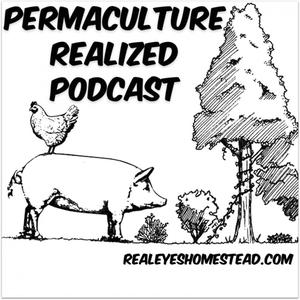 Permaculture Realized Podcast
Permaculture Realized Podcast
 Good Life Revival: Permaculture, Rewilding, Homesteading
Good Life Revival: Permaculture, Rewilding, Homesteading
 Making Permaculture Stronger
Making Permaculture Stronger
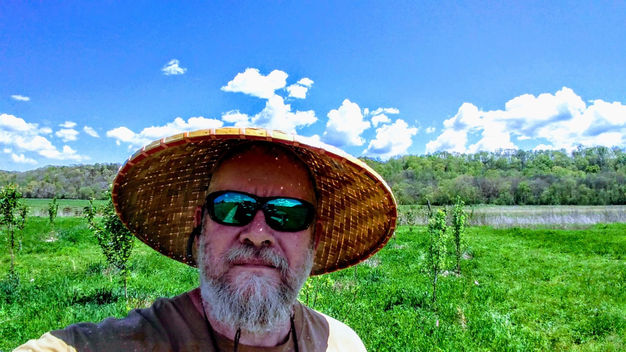 Regenerative Permaculture Farm and Garden Podcast
Regenerative Permaculture Farm and Garden Podcast
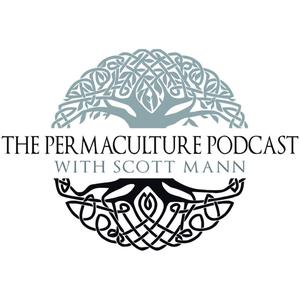 The Permaculture Podcast
The Permaculture Podcast
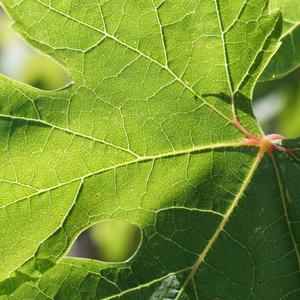 A Regenerative Future with Matt Powers
A Regenerative Future with Matt Powers